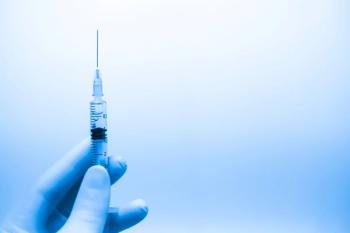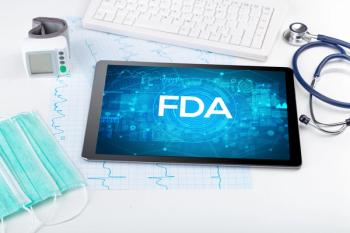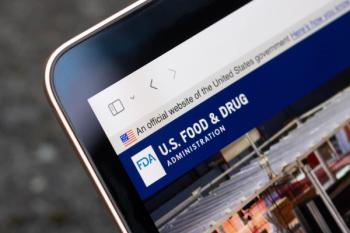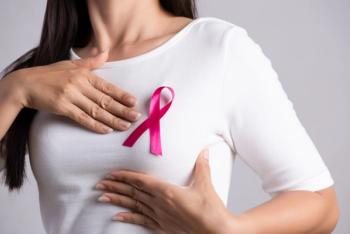
Here Are 7 Key Facts About Biosimilars
The FDA has created an online, searchable database that contains information about biological products, including biosimilar and interchangeable ones.
Most patients have heard of and have a basic understanding of generic medications.
In terms of the medication lifecycle, generic medications can be created once brand-name products lose their exclusivity rights or patents.
Generic medications are appealing options for both insurance companies and patients, as they typically cost 30% to 80% less than brand-name medications, according to the FDA.1
Although the term “biosimilar” has been in the mainstream since about 2015, many outside the health care industry know what it means or how it is different from a generic medication.
When describing biosimilars to patients, remind them that in their simplest form, medications are chemical structures, with some comprising simple, small molecules or pieces, while others are more complex. Biosimilars are made of complex chemical structures.2-4
Because biosimilars are complex medications, there are often products that treat complex conditions, such as insulin for diabetes and other biosimilars for conditions, such as multiple sclerosis or psoriasis.
Many biosimilars are dispensed by specialty pharmacies, which provide medications that are typically expensive for medical conditions that are intricate and often difficult to treat.
The FDA approved the first biosimilar, Zarxio (filgrastim-sndz) on
Here are 7 things to know about biosimilars.
All biosimilars are injectable or intravenous. All biosimilars are either self-administered as an injection under the skin or given intravenously or into the vein by a health care provider. Complex biologic medications are made from living organisms, such as bacteria or yeast, and not made by following a chemical recipe like other less complex medications. There are no oral biologics or biosimilars available, because of many factors, including the harsh environment of the gastrointestinal tract. However, with advancements in drug delivery systems there may be some in the future, such as an oral insulin product.6,7
Biosimilars have their own unique FDA approval pathway. Biosimilars go through an abbreviated approval pathway, known as the 351(k). This pathway was created to help reduce the cost of time of development of biologics without compromising effectiveness and safety. Even though the pathway is abbreviated, that does not mean the thoroughness associated with this process is compromised in any way. The abbreviated approval process meets the FDA’s rigorous standards to help ensure that biosimilars are just as effective and safe as their reference products.
Biosimilar information is found in the “Purple Book.” The FDA has created an online, searchable database that contains information about biological products, including biosimilar and interchangeable biological ones.8 This is a great resource for biosimilars and is similar to the FDA’s “Orange Book,” which identifies drug products approved based on effectiveness and safety, as well as therapeutic equivalence, meaning generic medications.9
Local community pharmacies may carry some biosimilars. Although most biosimilars are available only at specialty pharmacies, there are a few that can be gotten from local community pharmacies. For example, the long-acting insulin, Lantus, has biosimilars called Rezvoglar and Semglee that could be dispensed to patients with either type 1 or type 2 diabetes. There are also biosimilars for the treatment of less common conditions, such as cancer and cancer-related adverse effects, or inflammatory diseases, such as Crohn or rheumatoid arthritis.
More biosimilars receive approval every year. The biosimilar market is far from saturated, but each year more medications receive FDA approval, and some reference products have more than 1 competing biosimilar. In 2015, just 1 biosimilar was approved, but there were 7 in 2018 and 10 in 2019, which was the biggest year to date. Many reference medications have more than 1 biosimilar, including Avastin, Enbrel, Herceptin, Humira, Lantus, Lucentis, Neulasta, Neupogen, and Remicade.
Some biosimilars are FDA-approved but not available yet. Although there are 39 FDA-approved biosimilars not all the products are available yet. A great example is the biosimilars for Humira, which include 7 different products, none of which are yet available.10 The availability and marketing of these products has been dependent on pending patent litigation by Humira’s manufacturer.
Some biosimilars are interchangeable. Interchangeable biosimilars can be thought of like generic medications, in that they can be substituted. If medications are available in generic formulations, pharmacists will automatically substitute generics, unless a patient or physician specify that the brand-name medication is necessary. It is important to understand that though a physician may request a brand-name medication, that does not mean that health insurance will cover it.Brand-name medications, once a generic is available, are typically much more expensive. An interchangeable biosimilar has additional requirements, including that it is expected to produce the same clinical result as the reference product.2 Humira and Lantus are examples of medications that have interchangeable biosimilars.11
References
1. Saving money on prescription drugs. FDA. Updated May 4, 2020. Accessed January 25, 2023.
2. Biosimilar and interchangeable products. Updated October 23, 2017. Accessed January 25, 2023.
3. Biosimilar and interchangeable biologics: more treatment choices. Updated October 12, 2021. Accessed January 25, 2023.
4. Biosimilars. FDA. Updated September 16, 2022. Accessed January 25, 2023. https://www.fda.gov/drugs/therapeutic-biologics-applications-bla/biosimilars
5. FDA approves first biosimilar Zarxio (filgrastim-sndz) from Sandoz. Updated March 6, 2015. Accessed January 25, 2023.
6. Vllasaliu D, Thanou M, Stolnik S, Fowler R. Recent advances in oral delivery of biologics: nanomedicine and physical modes of delivery. Expert Opin Drug Deliv. 2018;15(8):759-770. doi:10.1080/17425247.2018.1504017
7. Oramed announces top-line results from phase 3 trial of ORMD-0801 for the treatment of type 2 diabetes. Updated January 11, 2023. Accessed January 25, 2023. https://oramed.com/oramed-announces-top-line-results-from-phase-3-trial-of-ormd-0801-for-the-treatment-of-type-2-diabetes/
8. Purple book database of licensed biological products. FDA. Updated November 3, 2022. Accessed January 25, 2023.
9. Orange book preface. FDA. Updated January 19, 2022. Accessed January 25, 2023. https://www.fda.gov/drugs/development-approval-process-drugs/orange-book-preface
10. Jeremias S. Part 1: biosimilars to bring a bumper crop of adalimumab options. The Center for Biosimilars. Updated September 6, 2022. Accessed January 25, 2023.
11. Biosimilar product information. FDA. Updated December 19, 2022. Accessed January 25, 2023. https://www.fda.gov/drugs/biosimilars/biosimilar-product-information
Newsletter
Stay informed on drug updates, treatment guidelines, and pharmacy practice trends—subscribe to Pharmacy Times for weekly clinical insights.


















































































































































































































